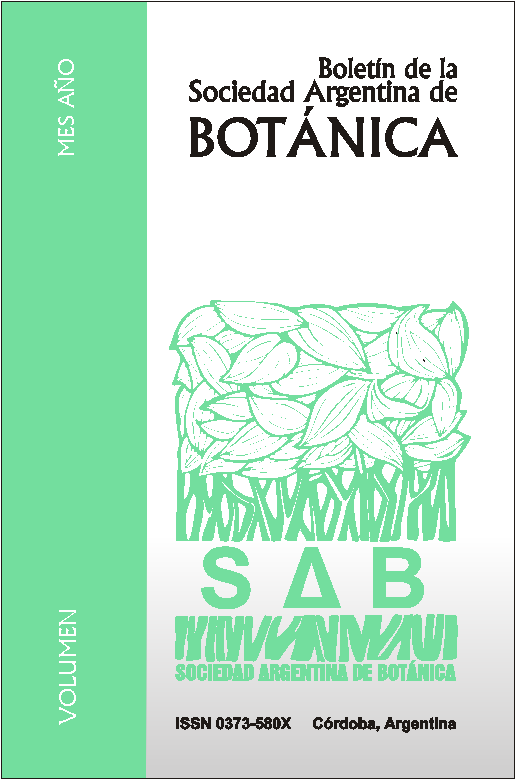Carbon storage in the plant biomass of the Villavicencio nature reserve (Mendoza-Argentina).
DOI:
https://doi.org/10.31055/1851.2372.v48.n3-4.7608Keywords:
Carbono, formas de vida, área protegida.Abstract
Carbon storage in the plant biomass of the Villavicencio Nature Reserve (Mendoza-Argentina). Nature reserves play a relevant role in carbon storage in arid lands. The vegetation of theNature Reserve of Villavicencio stores 98798 Mg (2.1 Mg/ha) of carbon in total; considering the Punaand unburned Monte vegetation, 91.2% of carbon occurs in aboveground parts (leaves and stems)and 8.8% in the root system. Monte vegetation, characterized by Larrea cuneifolia shrubland, stores77905 Mg C (3.9 Mg/ha), 78.8% of the total carbon in the area. Nanophanerophytes store 28.8% in theunburned shrubland, and 50.4% in the area burned in 2000, while chamaephytes store 95.5% in thearea burned in 2005. In the Puna belt, with 20893 Mg C (0.78 Mg/ha) stored, Jarava vaginata grasslanddominates and stores 88% of carbon, aboveground parts (leaves of grasses and leaves and stems ofchamaephytes) store 90% of carbon. In general, and taking into account both vegetation belts, 19.8% ofthe carbon present in the Reserve is stored in nanophanerophytes, 32.8% in hemicryptophytes, 28.8% inchamaephytes and 18.4% in succulents (cactaceae). Assessment of carbon storage, taking into accountthe different phytogeographic units, is necessary for management of the protected area and for a betterunderstanding of the role of these environments in the mitigation of atmospheric carbon.Downloads
Issue
Section
License
Provides immediate and free OPEN ACCESS to its content under the principle of making research freely available to the public, which fosters a greater exchange of global knowledge, allowing authors to maintain their copyright without restrictions.
Material published in Bol. Soc. Argent. Bot. is distributed under a Creative Commons Attribution-NonCommercial-ShareAlike 4.0 International license.





